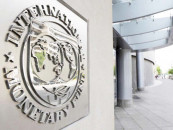Glass train project gains strategic importance
Transportation expert suggests project's expansion to Muzaffarabad

With the Murree Tourist Glass Train project's feasibility study due for completion by April 30, 2025, it's being speculated that the scheme has gained strategic importance, given the possibility of it being expanded to Muzaffarabad.
According to former Pakistan Railways general manager and the current CEO of the Centre of Excellence in Transportation and Railway Engineering, Ashfaq Khattak, the project holds strategic importance beyond tourism.
The feasibility study for the first phase is being conducted by the National Engineering Services Pakistan (Nespak) and is scheduled for completion by April 30, 2025.
Following its approval by relevant forums, the project will proceed to international tendering.
It will be implemented through a public-private partnership model.
According to sources, the feasibility study for the second phase was already completed during former prime minister Nawaz Sharif's third tenure, under the Kashmir Railway initiative.
The project will draw parallels to India's operational Jammu-Srinagar-Baramulla railway link.
The initial phase of the project includes constructing a 55-kilometre railway track from Islamabad's Margalla Railway Station to Bhara Kahu, Phurwaha Mor, Ghora Gali, Jhika Gali, and Bhurban.
In this regard, Ishfaq Khattak has provided technical input for the project to Nespak.
Collaborating with the Pak-Austria Institute of Applied Sciences and Technology, Khattak emphasised the project's significance, citing its potential to boost tourism along the Islamabad-Murree route.
"The use of advanced safety features will ensure the train's operation even during snowfall, enhancing its reliability," he said.
The track will utilise a broad gauge or standard gauge system with a cog-and-pinion rack for enhanced safety, Khattak said adding that a single track will be laid between the dual tracks to serve as a safety gear mechanism, allowing for an elevation increase of one foot every 12 feet.
It is being seen as a response to India's already operational tourist train service in the Indian Occupied Jammu and Kashmir region, which connects Jammu, Srinagar, and Baramulla via a high-speed railway link.
This ambitious initiative is expected to not only bolster tourism but also contribute to regional connectivity and strategic positioning.





















COMMENTS (1)
Comments are moderated and generally will be posted if they are on-topic and not abusive.
For more information, please see our Comments FAQ